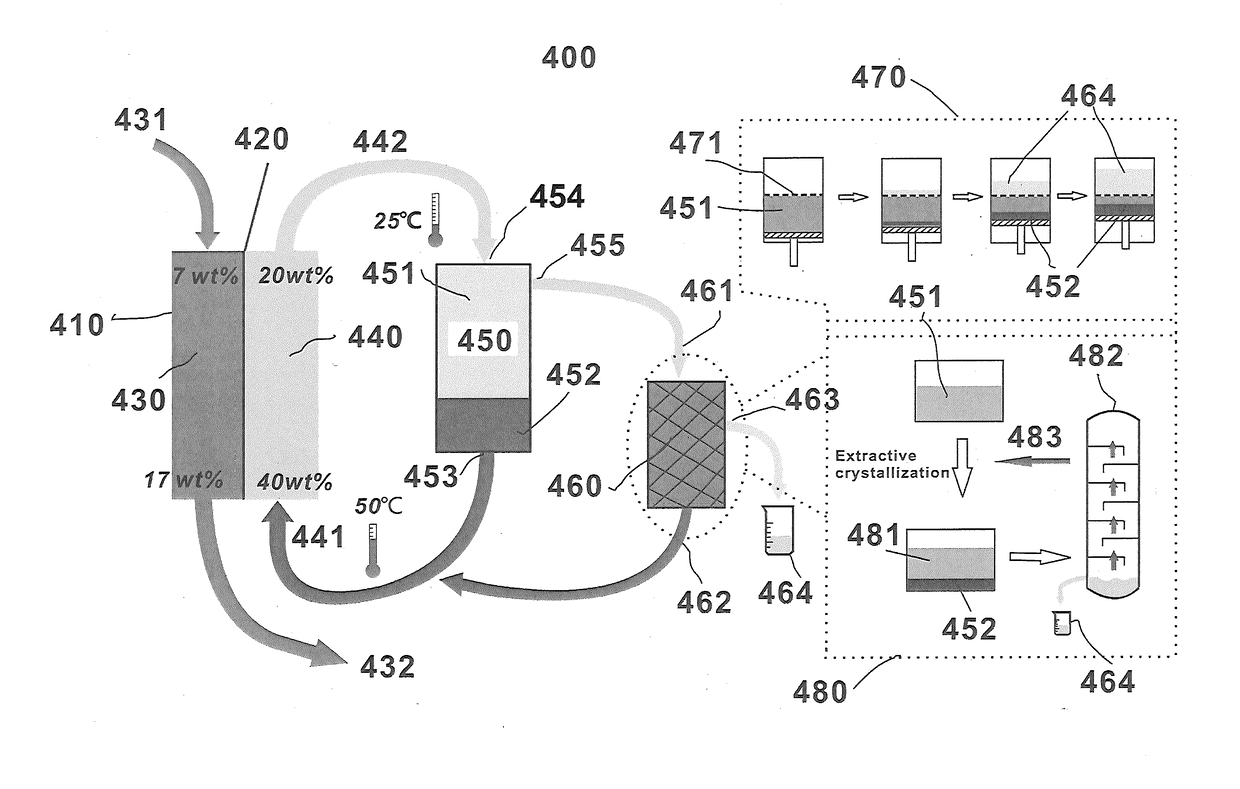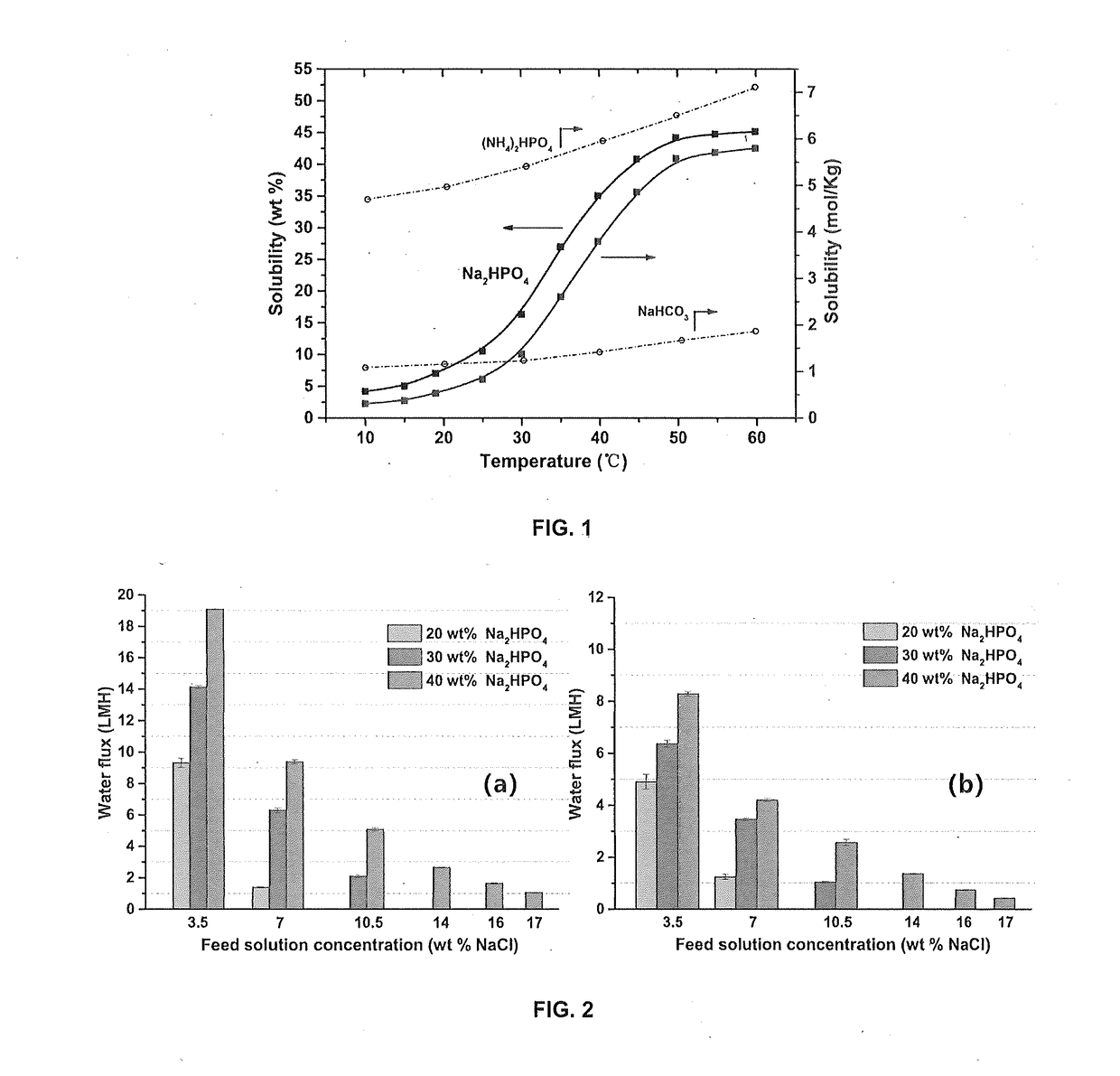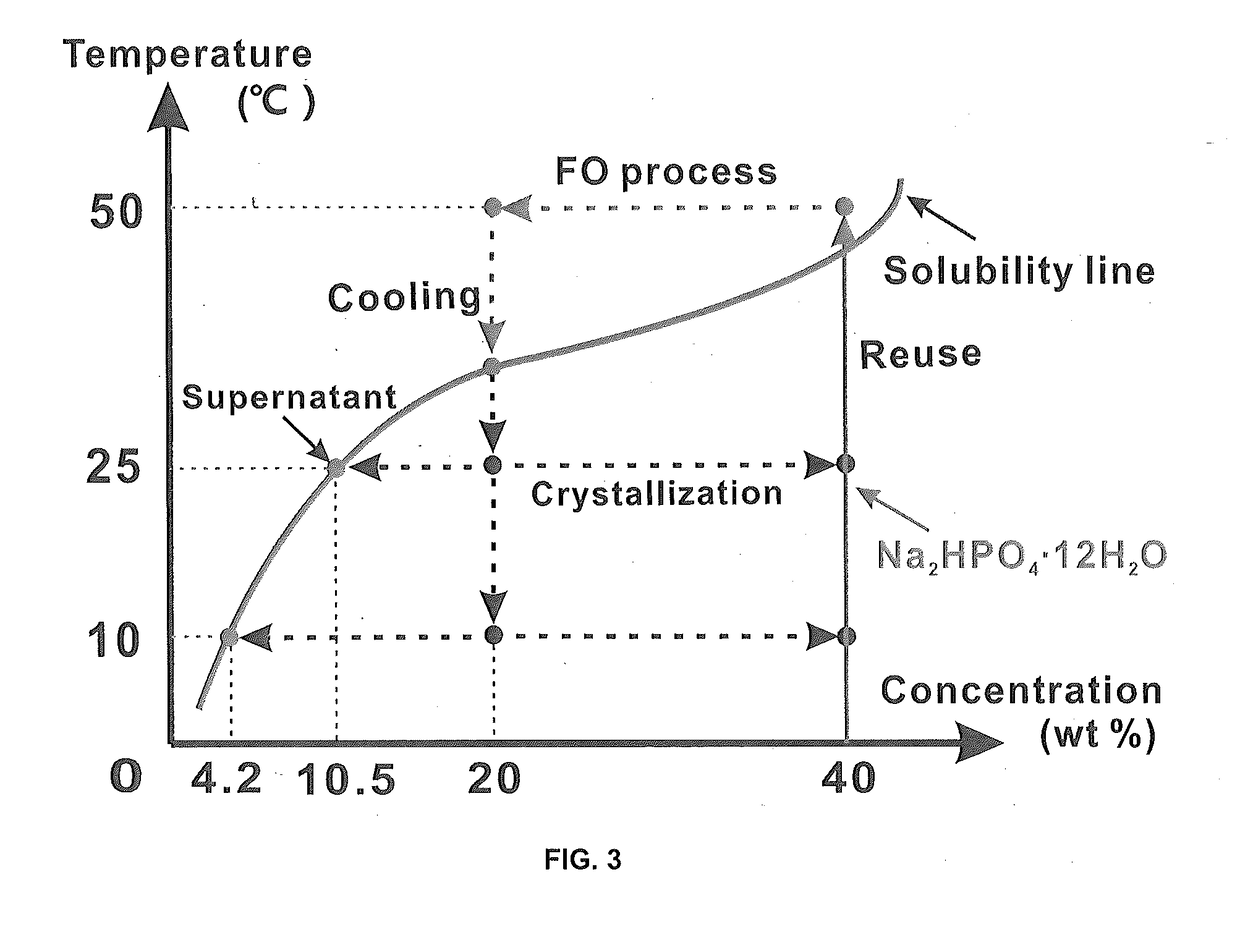Regenerable draw solute for osmotically driven processes
a technology of osmotically driven processes and draw solutes, which is applied in specific water treatment objectives, water/sludge/sewage treatment, crystallization separation, etc., can solve the problems of high osmotic pressure, high energy consumption of thermal distillation technologies such as multi-stage flash (msf), vapor compression (vc) or membrane distillation (md), and high energy consumption of thermal distillation technologies
- Summary
- Abstract
- Description
- Claims
- Application Information
AI Technical Summary
Benefits of technology
Problems solved by technology
Method used
Image
Examples
example 1
Determination of Disodium Phosphate Solubility
[0059]To measure the solubility at different temperatures, an excess amount of anhydrous disodium phosphate was mixed with 10 g of DI water in sealed vials under magnetic stirring at various temperatures controlled by a water bath. The temperature accuracy was within ±0.2° C. The solution and solid crystal mixture was isothermally stirred for 24 hours and stood still for 2 hours allowing for complete sedimentation. A fixed volume of the saturated supernatant was taken out using a pipette and weighed (msol) before dried in vacuum at 100° C. and 100 mbar until constant weight (mdry) was reached. The solubility in weight percentage was calculated as mdry / msol×100%.
[0060]For a draw solute that has a positive correlation between solubility and temperature, it is desirable for it to produce high osmotic pressure by achieving its highest possible solubility at moderate temperatures that are not far above room temperature. In addition, its solub...
example 2
[0064]Determination of Concentration in Water-Acetone-Na2HPO4 Ternary System
[0065]To determine the residue disodium phosphate concentrations in water / acetone mixture solution after the extractive crystallization of the supernatant obtained after cooling of the diluted draw solutions, various amounts of acetone, 20 wt % to 120 wt % with respect to the weight of pure water, was added into the supernatant (which is a 10 wt % Na2HPO4 solution at room temperature) in sealed vials. There is an instantaneous phase separation resulting in precipitation of solid crystal hydrates upon acetone addition. The mixture was allowed to settle for 1 hour before the solid crystals are removed. The solution portion was then extracted and weighed (msol) before dried vacuum oven at 100° C. and 100 mbar until constant weight (mdry) was achieved. The Na2HPO4 concentration in water / acetone mixtures were then calculated accordingly. All the measurements were repeated for three times.
[0066]Acetone was found t...
example 3
[0068]Water flux and Draw Solute Back Diffusion Measurements
[0069]Water flux during FO was measured in a cross-flow setup by monitoring the feed solution weight decrease with time. The method is adapted from a reported standard procedure [31]. The initial weight of feed solution and draw solution was 500 g and 200 g, respectively. The effective membrane area was 58.5 cm2. The feed and draw solutions flew in co-current in order to reduce the tension stress on membrane. The flow rate was 400 ml / min and plastic spacers were used in both feed and draw sides to reduce concentration polarization. During the tests, the temperature in draw solution and feed solution were monitored to be 50±1° C. and 46±2° C. respectively. The concentrations of feed solution and draw solution were kept virtually constant during the measurement. Water flux measurements were conducted in both FO mode (selective membrane layer facing towards feed solution) and PRO mode (selective layer facing towards draw solut...
PUM
| Property | Measurement | Unit |
|---|---|---|
| Temperature | aaaaa | aaaaa |
| Temperature | aaaaa | aaaaa |
| Temperature | aaaaa | aaaaa |
Abstract
Description
Claims
Application Information
 Login to View More
Login to View More - R&D
- Intellectual Property
- Life Sciences
- Materials
- Tech Scout
- Unparalleled Data Quality
- Higher Quality Content
- 60% Fewer Hallucinations
Browse by: Latest US Patents, China's latest patents, Technical Efficacy Thesaurus, Application Domain, Technology Topic, Popular Technical Reports.
© 2025 PatSnap. All rights reserved.Legal|Privacy policy|Modern Slavery Act Transparency Statement|Sitemap|About US| Contact US: help@patsnap.com



